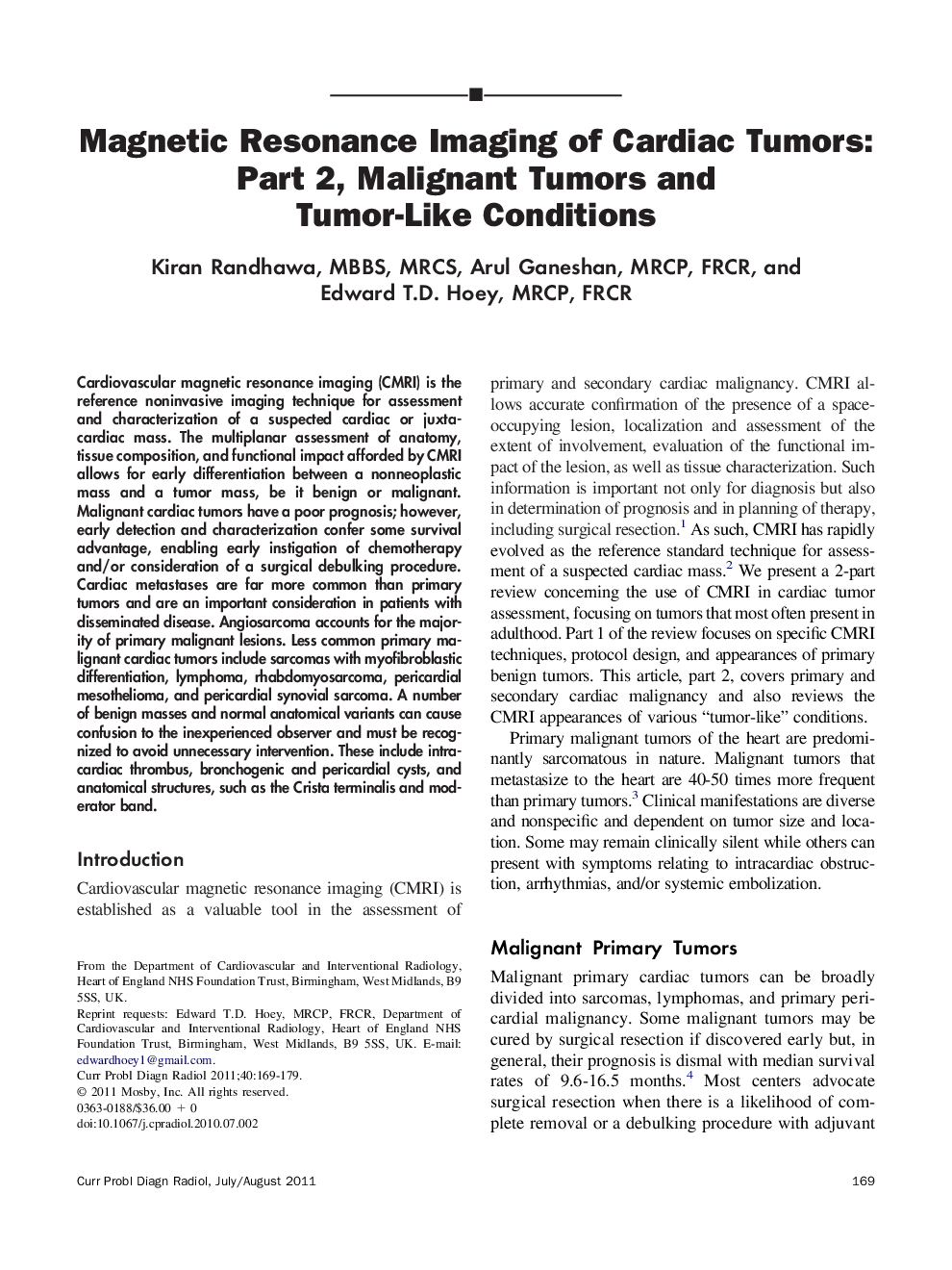| Article ID | Journal | Published Year | Pages | File Type |
|---|---|---|---|---|
| 4223671 | Current Problems in Diagnostic Radiology | 2011 | 11 Pages |
Cardiovascular magnetic resonance imaging (CMRI) is the reference noninvasive imaging technique for assessment and characterization of a suspected cardiac or juxta-cardiac mass. The multiplanar assessment of anatomy, tissue composition, and functional impact afforded by CMRI allows for early differentiation between a nonneoplastic mass and a tumor mass, be it benign or malignant. Malignant cardiac tumors have a poor prognosis; however, early detection and characterization confer some survival advantage, enabling early instigation of chemotherapy and/or consideration of a surgical debulking procedure. Cardiac metastases are far more common than primary tumors and are an important consideration in patients with disseminated disease. Angiosarcoma accounts for the majority of primary malignant lesions. Less common primary malignant cardiac tumors include sarcomas with myofibroblastic differentiation, lymphoma, rhabdomyosarcoma, pericardial mesothelioma, and pericardial synovial sarcoma. A number of benign masses and normal anatomical variants can cause confusion to the inexperienced observer and must be recognized to avoid unnecessary intervention. These include intracardiac thrombus, bronchogenic and pericardial cysts, and anatomical structures, such as the Crista terminalis and moderator band.
